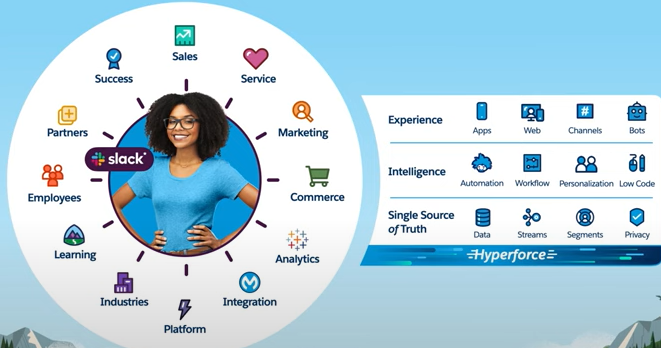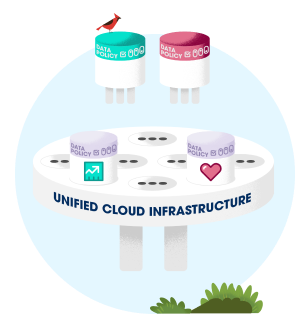
Salesforce Hyperforce
Hyperforce is a complete re-architecture of Salesforce designed to deliver an even more powerful and scalable platform to support the growth and success of Salesforce’s global customer base. Hyperforce will empower Salesforce customers to securely deploy Salesforce apps and services from anywhere, while using the scale and agility of the public cloud.
“Every company right now is facing an imperative — to go digital, fast,” said Bret Taylor, President and COO, Salesforce. “Salesforce Hyperforce is a quantum leap forward in how Salesforce can accelerate our global customers’ digital transformations and empower them to grow, fast and at scale, on our trusted platform.”
Salesforce provides a single source of truth regarding customer data connecting multiple applications, business systems, and devices. It helps sales, marketing, customer service teams to do their jobs better.
The whole intention behind Hyperforce is to enable Salesforce customers to move their customer data from Customer 360 – i.e., from all products like Sales, Service, Marketing cloud and even connected applications to the public cloud of their own choice.
Hypercompliant

With Hyperforce, companies get to pick which location data can be stored. Data can be stored locally, this will come in handy especially for organizations who need to comply with country-specific regulations. For instance, companies in the public sector could benefit from this.
Hyperscalable

The best part about the public cloud is its scalability and elasticity. Companies can consume compute resources on a need basis, it applies to Hyperforce as well. You can deploy resources in the public cloud in a faster and easier fashion. Salesforce implementation lifecycle will be reduced from months to days.
Hypersecure

Security is a crucial factor when it comes to storing sensitive customer information. Hyperforce will give peace, you get to save data in the world’s most trusted public cloud of your choice. You get to focus on business activities, leaving the security and privacy concerns to public cloud providers.
Hypercompatible

Salesforce assures backward compatibility i.e., you get to run existing Salesforce applications, customizations, and integrations, as usual, no matter where the data is stored at.
The company will be rolling out Hyperforce over the next year and beyond as it opens in more regions.
The move to Hyperforce will reduce Infrastructure hosting costs, efforts for Salesforce in the long run. Salesforce customers would also benefit from this move. It’s definitely a win-win situation.
Thanks for Reading..